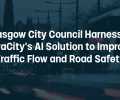Introduction
You are reading the first ever blog post from the VivaCity research team! We will introduce the team and the role our solutions play in VivaCity’s goals to understand & manage traffic.
Smart Sensing in Real Environments
Machine learning on a dataset that is finite and never evolves is straightforward. However, dealing with dynamic environments, new traffic projects, over long periods of time is nothing but challenging! Our Research team’s strong understanding of the underlying computer vision primitives and deep learning methods are the key factors in building the vision system that can tackle the difficulties of real world environments.
Our sensors are designed to anonymously and automatically detect people, classify/identify vehicles, and track such traffic through cluttered scenes. Our edge processing capabilities are spearheaded by the latest advances in deep learning.

Benchmarking and Validation
The key to our high-level of accuracy, and keeping our clients happy with our outputs, is the hard work we continually put into building up our unique datasets and validation tools. Every aspect of our vision solutions, including algorithms and models, are benchmarked and validated continuously and every time we prepare for new deployments.
Enabling Powerful Features
So what can you do with these vision systems? Let’s take traffic flow as an example. What if you looked into a junction and counted cars entering it? We can train a time-series sensitive recurrent neural network (RNN) to understand flow data and see the trends in it. Later we can ask from the RNN what will be the traffic flow at any point in the near future.

Let’s say you managed to gather a day’s worth of flow and journey-times, and want to create a simulation of the junction based on that data. Once the traffic in the calibrated simulation behaves the same as the data you provided, you have a simulated junction that can be used to create more data. Data that follows the realities of said road network, but can vary in traffic demand. And guess what, with our vision system there was no annotation work required!
The two cases above, flow prediction and simulation calibration, are just a few examples which capturing traffic flow makes possible. Imagine the opportunities when looking at all the scene information our computer vision solutions are capable of capturing!
So who are our Research Team?
Currently four people make up our multi-national research team, with each individual bringing in their unique set of skills for computer vision and deep learning. We encourage people rotating in from other teams to bring in new blood. We foster close ties with partner companies, and the majority of our team comes from with a PhD background. We often have interns joining us from top UK universities. New ideas from intelligent people are what make us thrive!

Coming Up
Hopefully you’ll by now have a better overview on the type of research our team tackles. Be sure to check out our more detailed blogs coming up later, as we’ll be exploring state-of-the-art and new capabilities we’re bringing in for our sensing solutions!









